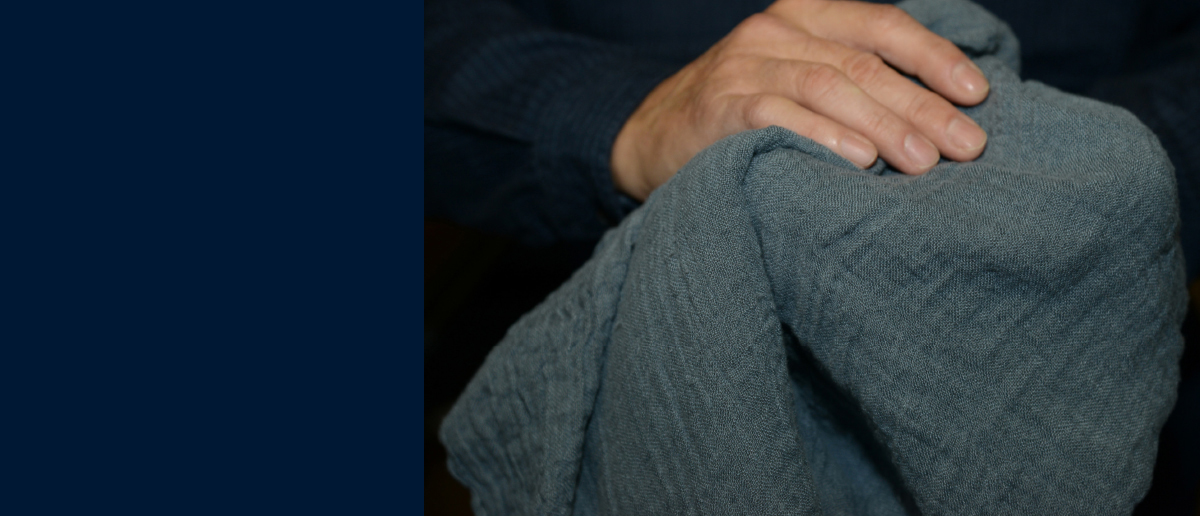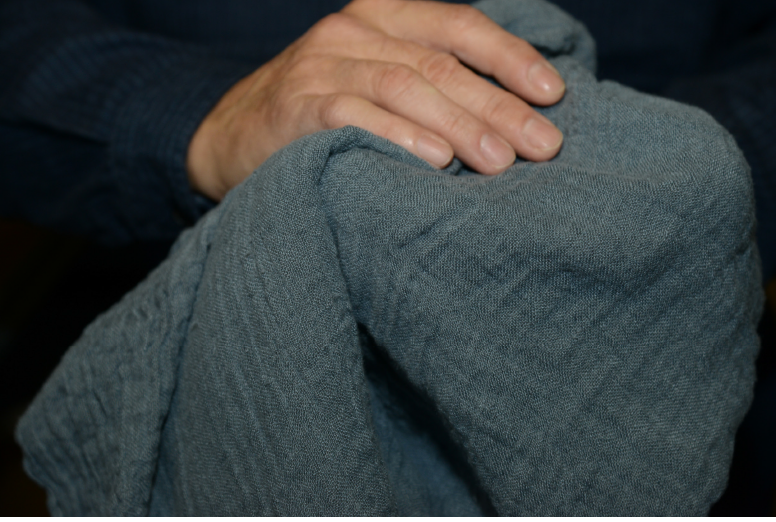Portrait of a Drapier
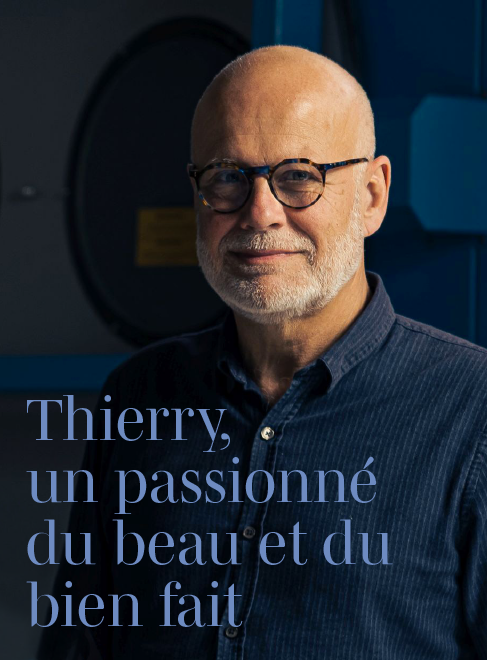
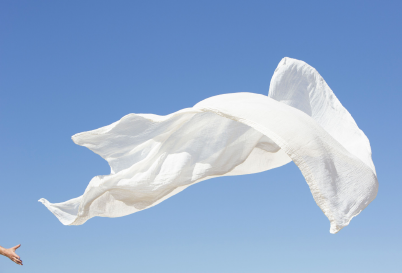
« I still remember the magic of master glassmakers delicately blowing glasses and carafes in the heat of the kilns, and I have a deep admiration for schools of excellence such as this one. This experience has left a lasting impression on me and given me a taste for beauty and a job well done. » he confides with emotion.
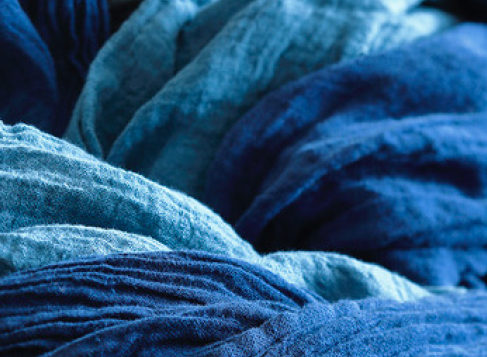
- But as the years went by, he had to watch helplessly as the country slowly became deindustrialized. A heartbreaker!
With a passion for new technologies, and an entrepreneur at heart, Thierry has been involved in one innovative project after another: he created the first CD-ROMs and websites, produced almost a hundred television programs for La Cinquième and Canal+, then set up a computer antivirus company.
Yet Thierry has never given up on his dream: to contribute, in his own small way, to bringing unique skills back to life.
Couleur Chanvre was this opportunity and Thierry became a « Drapier »
« Textiles is an exceptional craft, requiring perfect mastery and a highly skilled workforce. It's a world of passion and precision », he explains.
With Couleur Chanvre, Thierry has set himself an ambitious roadmap:
With Couleur Chanvre, Thierry has set himself an ambitious roadmap:
• Revive the hemp textile industry, which had been completely abandoned.
• Work only with the finest textile fibers, giving preference to local fibers whenever possible.
• Develop an innovative dyeing technology to remove all toxic products from the chain, so as to offer 100% healthy linen, for both customers and the planet.
• Guaranteeing a real Made in France..
• And of course, building a genuine, caring relationship with customers.
Today, Couleur Chanvre is the pioneer of hemp textiles, and recognized as one of the leading experts in natural textile fibers, with products made from hemp, linen and organic cotton. Its ecological and healthy dyeing process is unique in the industry.
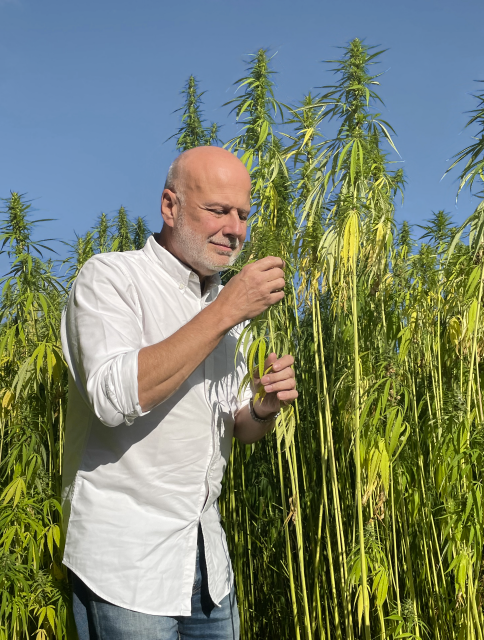
Thierry ne s’arrête pas là :
He is a director of the “Lin et Chanvre bio” association, and in 2024 was made a Chevalier de l'Ordre du Mérite agricole for his commitment to the agricultural sector of natural textile fibers, particularly hemp. « It's an immense honor. I admire the work of farmers, especially those who produce the fibers I transform, true artisans of the living. Their high standards and passion remind me of the master glassmakers I knew at the start of my career. »
And its objective? « Helping people sleep better and making the world a sweeter place », says Thierry, with a smile that speaks volumes about his determination.
For him, combining tradition, innovation and respect for the planet has never been so essential.
